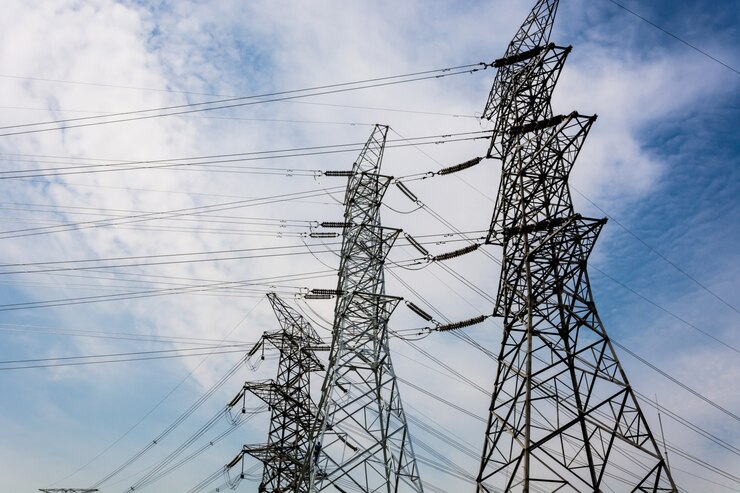Understanding Smart Grid and Transmission Lines: Detailed Guide
2025-02-09
The Future of Smart Grid and Transmission Lines
In contemporary society, there is a growing need for efficient, dependable, and sustainable electricity systems. The modern power grid is the backbone of the present society, and at the present times, it is shifting through tremendous changes due to the associated technologies and results. This article will reveal how the smart grid and transmission lines technology dwell in the transmission network by providing a more reliable, resilient, and intelligent power system.
What are a Smart Grid and How Does It Relate to Transmission Lines?
A smart grid refers to a more modern and sophisticated electrical grid as compared to the regular grid system. In contrast to the conventional work that smart systems that previously worked in the transmission of power from the source to the consumers, the smart grid is capable of managing the flow of power, providing information on the flow as well as organizing for changes in the flow. It tends to utilize sensors, automated systems, and communications networks to enhance the existing power flow and also the productivity of grids.
On the other hand, transmission lines refer to high-voltage conductors that are used in transferring electricity from one point to the next over long distances. These form the backbone of the transmission system and transmit electricity from generation facilities (power plants or renewable generation farms) to substations before the power is transmitted to consumers.
Integrated into the smart grid application control system, distribution boards get the functions of monitoring, control, as well as optimization of the transmission line. This interaction between the smart grid and transmission system leads to the formation of an intelligent network that enhances the stability of the existing grid system as well as incorporates renewable energy and lowers operational costs.
The Role of Smart Grid in Enhancing Transmission Line Efficiency
As SH needs to increase the efficiency of the existing transmission lines, smart grid transmission equally contributes to that goal. Such grids entail many drawbacks including inefficiency due to energy losses, voltage instability in the region, and blackouts caused by disasters such as recurrent mishaps or overloading of electricity circuits. These are counteracted by smart grid technologies, which incorporate monitoring, predicting, and even controlling processes of the transmission grid in instantaneous mode.
There is a listing of a few of the benefits as under; The enhancement of power flow control through equipments such as the Wide Area Monitoring Systems (WAMS) and the Phasor Measurement Units (PMUs). These technologies make it possible for the operators to constantly monitor the tendencies for overloading, and the appearance of deficiencies and can very quickly reroute the energy to avoid disruptions.
Further, optimization of the transmission line as a result of the smart grid also helps in minimizing transmission losses by controlling the flow of power. This leads to less energy being consumed as it transmits from one grid location to another, hence enhancing the general grid efficiency.

Technologies Shaping the Future of Smart Grid Transmission Lines
The following indicates several technologies in the smart grid transmission system that are rapidly growing due to advancements in technology. Among them, the following can be listed:
Flexible AC Transmission Systems (FACTS)
FACTS devices are devices that improve the transmission of power in power systems by offering Voltage Support, Reactive power compensation as well as control power flow. These systems are necessary for the enhancement of the operational reliability and flexibility of the grid to accommodate a larger fraction of renewable generation.
High Voltage Direct Current (HVDC) Transmission
HVDC is the best technology that offers the ability to transport electricity from one region to another without much loss. Compared to AC transmission, HVDC systems can transmit the electricity over a larger distance making them suitable for use in transmission of electricity from offshore wind farms or other renewable energy facilities.
Advanced Metering Infrastructure (AMI)
AMI is another crucial element in the smart grid in that it enables a utility to communicate with consumers. AMI also helps utilities control the load and manage demand, to improve the efficiency of transmission lines.
Grid Automation and Control
Smart grid automation therefore incorporates technological systems that interconnect, monitor, control, and coordinate electricity delivery to reduce instances of overload as well as match demand with supply. A mattress in terms of reserve margin is thus important to sustaining grid stability and providing light at all times, in all homes.
Integrating Renewable Energy into Smart Grid Transmission Lines
A big problem in transmission systems of the current age is the problem of incorporating renewable energy sources like wind and solar energy. These are unreliable and fluctuating energy sources which it hard to meet the demand and supply issues. The advancement brought about by the smart grid enables the provision of information concerning the lines, thus making it easier for the grid operators to balance the supply and the demand appropriately.
In this way, the addition of variable renewable energy can be made smoothly without causing issues with the stability of the smart grid transmission line control. This is rather perceived as crucial due to a constantly growing trend towards the use of renewable energy sources across the globe.
Smart Grid Transmission Line Security and Cybersecurity
Since the integration of the smart grid is based on the communication infrastructure and exchange of data, it is necessary to have a secure system. Any compromise in the system can lead to one catastrophe or the other affecting the whole transmission system.
To resume these apprehensions, utilities are getting sufficiently involved in cybersecurity for the smart grid transmission line. This includes the uses of encryption, sophisticated ways of authenticating individuals; and surveillance to search for unusual activities or invasions. Security of the transmission lines of the smart grid is very important to enhance the confidence and functionality of the smart grid systems.
Best Practices for Smart Grid Transmission Line Maintenance
Hence, there is a need for smart grid transmission lines to be followed up by the best practices of maintenance and monitoring by the utilities. These include:
Prescriptive Maintenance: The use of data analytics to determine probable failures and make maintenance arrangements before they take place.
On-going maintenance: Continuously replacing the parts of the transmission line with modern ones to enhance its operations.
Real-Time Monitoring: It is a process of monitoring the grid's health through sensors and PMUs to determine if the system is healthy or requires intervention in real time.
Conclusion
The integration of smart grid technology and transmission lines is paving the way for a new era of power delivery. With innovations in monitoring, control, automation, and cybersecurity, the smart grid is set to enhance transmission line efficiency, improve grid reliability, and support the transition to renewable energy. For more information on how smart grid transmission lines can revolutionize your power infrastructure, visit XY Tower.

Hey, I’m Chunjian Shu
"X.Y. Tower: Reliable, innovative solutions for high-quality towers and electrical equipment with professional service.
